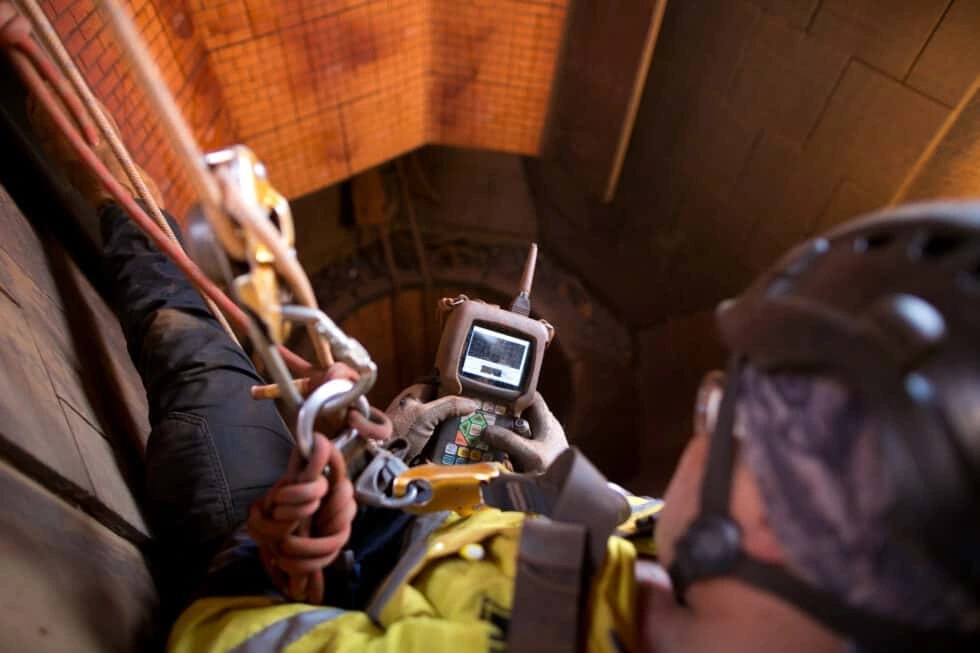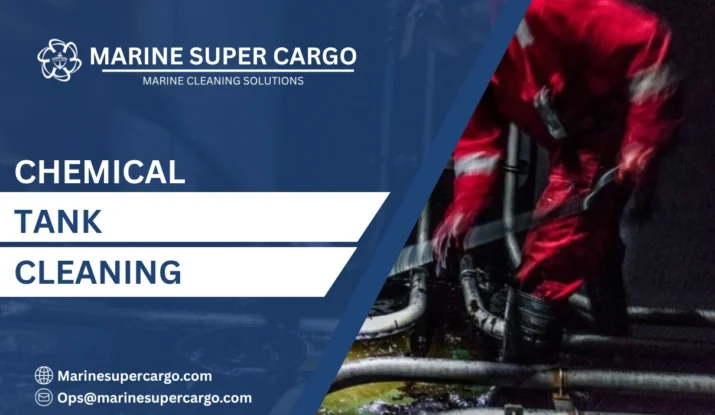Chemical tank cleaning demands rigorous safety protocols and specialized knowledge to handle hazardous residues effectively. Maritime vessels transporting chemicals face unique challenges requiring expert procedures. Marine Super Cargo provides comprehensive services that prioritize crew safety while maintaining regulatory compliance throughout every operation.
Understanding Chemical Tank Cleaning Complexity
Operations involve removing hazardous substances from cargo tanks safely and efficiently. Every project requires detailed assessment of residue properties, reactivity, and toxicity levels. Proper prevents cross-contamination between different cargo grades and ensures vessel readiness for subsequent shipments.
The complexity of chemical tank cleaning increases with incompatible cargo sequences. Acids, caustics, and reactive chemicals leave residues requiring specific approaches. Marine Super Cargo technicians assess each requirement based on cargo history and upcoming loading specifications.
Hazardous Residue Identification in Chemical Tank Cleaning
Before commencing chemical tank crews must identify residual chemicals accurately. Review cargo documentation, Material Safety Data Sheets (MSDS), and previous cargo records for comprehensive planning. strategies differ significantly between corrosive acids, flammable solvents, and toxic compounds.
Atmospheric testing forms the foundation of safe chemical tank operations. Measure oxygen levels, explosive gases, and toxic vapor concentrations throughout port and starboard sections. cannot proceed until atmosphere readings confirm safe entry conditions per MARPOL Annex II standards.
Safety Protocols for Chemical Tank Cleaning Operations
safety begins with proper personal protective equipment. Teams conducting must wear appropriate respirators, chemical-resistant suits, gloves, and safety boots. Emergency response equipment including eyewash stations and safety showers must be positioned near areas.
Ventilation systems operate continuously during chemical tank activities. Install portable fans to maintain airflow from forward to aft sections. Continuous atmospheric monitoring throughout ensures hazardous vapor concentrations remain below permissible exposure limits. Marine Super Cargo implements strict safety measures during every project.

Step-by-Step Process
Initial Purging and Ventilation
Begin chemical tank by purging residual vapors using inert gas or forced ventilation. Open all tank access points including dome hatches, butterworth plates, and inspection openings. This preliminary phase reduces vapor concentrations to safe working levels.
Pre-Wash Chemical Tank Cleaning
Execute preliminary washing using appropriate solvents or neutralizing agents for specific chemical tank requirements. Acids require alkaline neutralization while caustic residues need acid treatment during. Temperature control proves critical—maintain optimal conditions specified in procedures.
Mechanical Chemical Tank Cleaning
Deploy automated tank cleaning machines covering entire tank surfaces during operations. Position machines to reach bulkheads, frames, heating coils, and structural supports throughout port and starboard areas. High-pressure washing during removes stubborn residues from tank surfaces effectively.
Manual Inspection and Spot Cleaning
After mechanical , conduct thorough manual inspections. Crews wearing full protective equipment examine all surfaces during verification. Remove any remaining deposits using approved hand tools and cleaning solutions specific to requirements.
Final Rinse and Atmosphere Testing
Complete with freshwater rinsing to remove all traces of chemicals and cleaning agents. Conduct final atmospheric testing confirming tanks meet specifications for chemical tank certification. Documentation proves successful ]completion per IMO regulations.
MARPOL and IMO Compliance in Chemical Tank Cleaning
Chemical tank must comply with MARPOL Annex II requirements governing noxious liquid substances. The IMO International Bulk Chemical Code (IBC Code) establishes standards based on cargo categories. Ships carrying hazardous chemicals require approved procedures documented in vessel operations manuals.
Prewash procedures during chemical tank determine whether residues discharge to reception facilities or at sea. Category X substances demand strict protocols with mandatory shore reception. Marine Super Cargo ensures complete regulatory compliance throughout operations.
Waste Disposal and Environmental Protection
Chemical tank generates hazardous waste requiring proper handling and disposal. Segregate incompatible waste streams during to prevent dangerous reactions. Port reception facilities accept residues meeting specified criteria outlined in local regulations.
Document all waste transfers from operations in the Cargo Record Book. Maintain records proving compliant waste disposal for port state control inspections. Environmental protection remains paramount during activities.
Best Practices for Efficient Chemical Tank Cleaning
Experienced professionals recommend sequential cargo planning minimizing cleaning intensity. Schedule compatible cargoes reducing complexity and duration. Maintain heating systems at optimal temperatures throughout cycles when handling temperature-sensitive residues.
Invest in crew training covering safety procedures, emergency response protocols, and equipment operation. Regular equipment maintenance ensures operational reliability. For additional guidance, review our vegetable oil tank cleaning procedures demonstrating specialized techniques.
Marine Super Cargo delivers expert services combining safety, efficiency, and regulatory compliance throughout every maritime operation.
FAQs
Q1: How long does chemical tank cleaning typically require?
It’s duration varies from 24-72 hours depending on residue type, tank size, and required cleanliness standards.
Q2: What safety equipment is essential for chemical tank cleaning?
It requires respirators, chemical-resistant PPE, atmospheric monitors, ventilation equipment, and emergency response gear.
Q3: Can different chemical residues mix during chemical tank cleaning?
No, chemical tank cleaning must prevent mixing incompatible substances to avoid dangerous reactions or contamination issues.
Q4: What are MARPOL requirements for chemical tank cleaning waste?
MARPOL Annex II categorizes chemicals requiring specific and discharge procedures based on environmental hazard levels.
Q5: Who certifies chemical tank cleaning completion?
Independent surveyors or chemists certify meets specifications required for subsequent cargo loading operations.
Trust Marine Super Cargo for professional services ensuring safety, compliance, and operational excellence.


